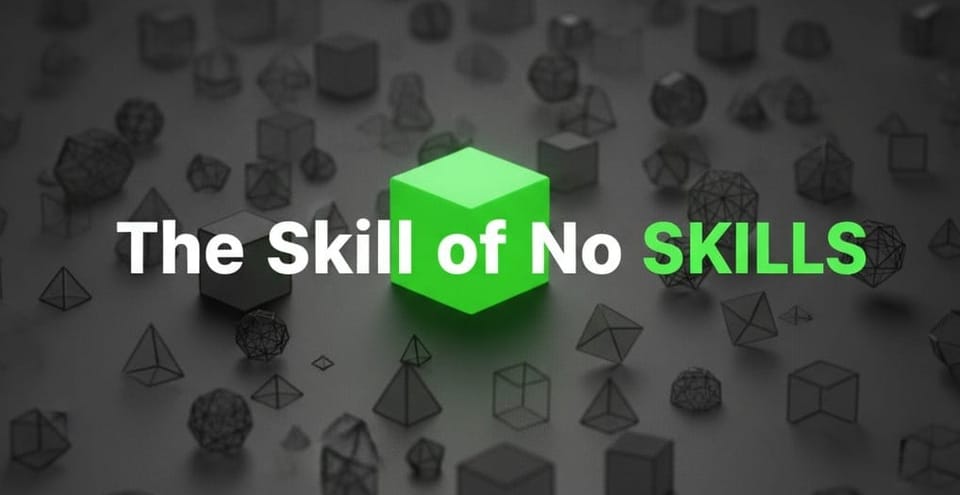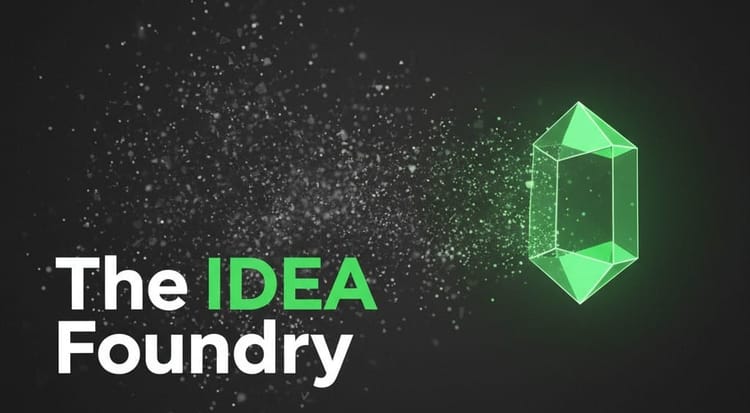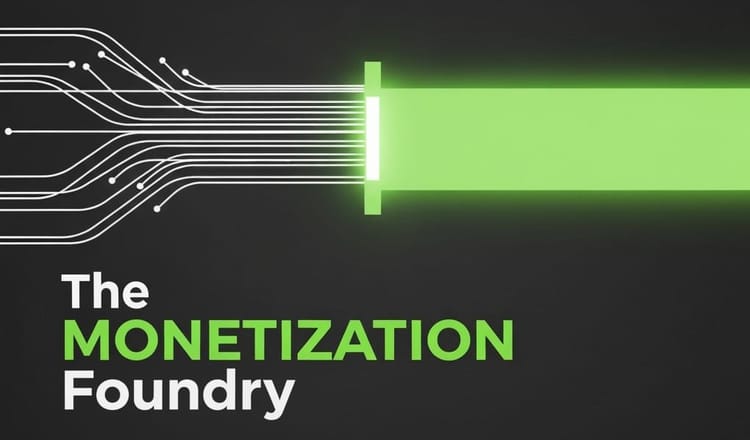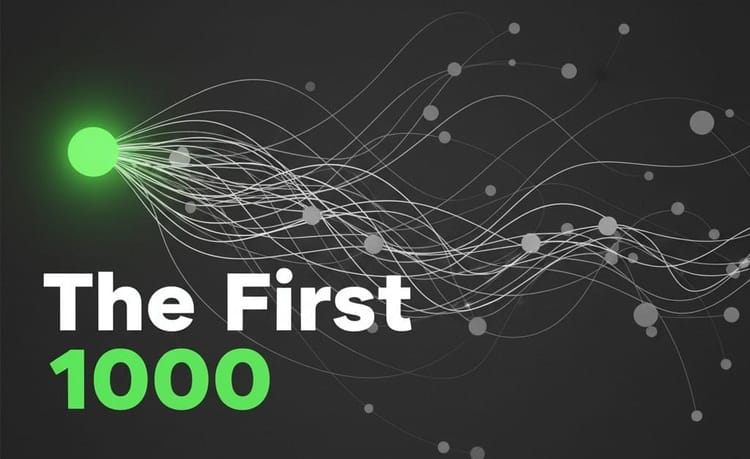The Skill of No Skills: How to Become a Content Creator (Even When You're Not an Expert)

You see them every day. The fitness influencer with the perfect physique. The coding genius who sold a company at 22. The marketing guru with a decade of client results. And you think to yourself, "I could never do that. I don't have a thing."
That feeling—the belief that you're missing a special, marketable skill—is the single biggest lie the creator economy tells. It's a flawed model designed to keep you on the consumer side of the equation, scrolling through their success instead of building your own.
The truth is, the most successful creators today aren't "experts" in the traditional sense. They are builders. They've simply chosen a better model for building a brand in public. I'm going to show you the four models that work.
When I was in college, I didn't try to become a creator. I tried to become a physicist of the creator economy. While my friends were scrolling, I was building spreadsheets. I would deconstruct viral posts, map the growth funnels of newsletters, and track the monetization models of my favorite YouTubers. I was obsessed with finding the underlying patterns—the physics of attention. I never posted a thing.
My "hard lesson" was realizing my private research notes were more valuable than 99% of the "expert" advice being sold online. The gurus were sharing anecdotes; I had the data. The models I'm about to show you aren't based on my creative talent; they're based on my analysis of what actually works.
This guide will provide that framework. We will decode the four primary models for becoming a successful content creator, even if you feel you have no outstanding skills.
Pillar 1: The Documenter Model: Learn in Public
For two years, my research was private. I was terrified to publish because I wasn't a "creator." One day, I found a clear correlation between the posting frequency of new accounts and their 90-day growth rate. It was a simple data point, but it felt important. I anonymously posted my chart and a short analysis to a forum for creators. The caption was simple: "I've been analyzing 500 new creator accounts. Here's what I learned about momentum." That single, data-driven post got more discussion than a thousand "look at my lifestyle" posts. I realized the journey of discovery itself was the most valuable thing I could share.
Shift your mindset from "Expert" to "Documenter." Your lack of a creative "skill" is your greatest asset. By documenting your research, your analysis, and your process of discovery, you build a community invested in your findings. Your content is not a lecture; it's the logbook of your investigation.
Choose one topic you are genuinely curious about analyzing—it could be AI tools, newsletter business models, or TikTok trends. Commit to documenting your analysis for 90 days. Your content is simply the answer to the question, "What patterns did I find this week?"
Pillar 2: The Curator Compass: Filter the Noise
My analysis generated a firehose of information: articles, data sets, obscure interviews. To keep it organized, I started a simple weekly email for myself with the top 5 most signal-rich discoveries. I shared it with two friends who were also interested in the creator economy. They shared it with their friends. Within months, that private "discovery digest" had thousands of subscribers. I wasn't creating anything new; my analysis was simply filtering the signal from the noise for others.
In an age of information overload, curation is a high-value skill. If you can't be the source, be the filter. Your value isn't creating more information, but finding, organizing, and contextualizing the best information. Your expertise isn't the topic itself; it's your ability to identify what matters based on a clear analytical framework.
Pick a broad, noisy topic you're interested in (e.g., sustainable fashion, the creator economy, no-code tools). Your job is to become the most trusted filter. Create a newsletter or thread series where you consistently share the most valuable resources, data, and examples you find through your analysis.
Pillar 3: The Connector Model: Build a Platform for Others
My data could tell me the "what," but it couldn't always tell me the "why." I saw one creator whose growth defied all my models. I was stumped. Instead of guessing, I sent him an email with my findings and asked for a 15-minute call to understand his strategy. He was so impressed with my research that he agreed. The qualitative insights from that call were more valuable than a month of data analysis. I realized I could use my research as a key to unlock conversations with people far more experienced than me.
Your value can be your access, not your knowledge. Use your analysis to open doors. By becoming a platform for other people's stories and insights—contextualized by your data—you become a central node in that community. Your skill becomes asking insightful, data-informed questions.
Start a podcast or interview series. Use your initial analysis to get the attention of experts in your field. Your platform grows not just by sharing data, but by using data to fuel the most interesting conversations.
Pillar 4: The Problem-Solver Framework: Be One Step Ahead
In my research, I noticed dozens of creators complaining about the same thing: they didn't know how to write a compelling welcome email sequence. The guru advice was all fluff. Using my database of successful newsletters, I identified the 3 most common formats that the top 1% used. I created a simple, free template outlining these three structures with real-world examples. It wasn't based on my opinion; it was based on my data. It became my single most downloaded resource and drove thousands of new subscribers. I wasn't an email marketing expert; I was just the guy who had analyzed the problem correctly.
You don't need a Ph.D. You just need to be one step ahead. Use your analytical skills to identify a high-leverage, recurring problem within a community. Then, create a data-backed solution. By solving a series of micro-problems, you build immense trust.
Pay attention to the communities you're analyzing. What frustrations appear constantly? Use your research skills to find a data-driven answer or create a simple framework that solves that one problem. Your niche will find you based on the problems you solve.
Why It Matters
The creator economy is the single greatest opportunity for asymmetric leverage in modern history. The old gatekeepers—the universities, the corporate ladders, the publishing houses—no longer control the flow of information. The myth that you need their permission or their credentials to start is broken.
By choosing one of these four models—The Documenter, The Curator, The Connector, or The Problem-Solver—you are stepping into a new reality. You are giving yourself permission to build, share, and monetize your curiosity. You don't need to be an expert. You just need to start.
CTA
If this article resonated with you, I break down the tactical execution of these models every week in my free newsletter. Subscribe to Monetize Foundry below, and I'll send you the actionable steps to turn these frameworks into a real content business.



Member discussion